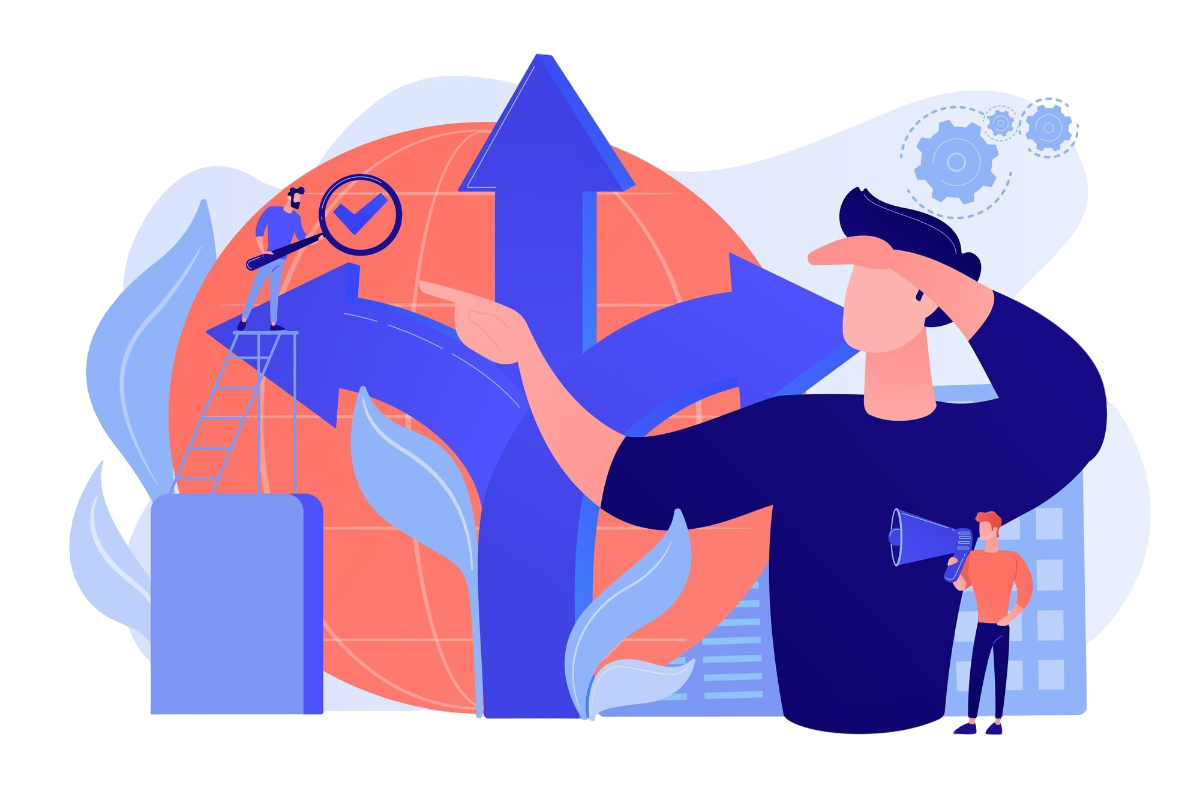Employee Background Check: The Evolution of Social Media Screening to Automated Risk Assessment
Employers have discovered how to use social media to vet potential hires

Social media started out as a fun way to connect with friends, share life updates, and, let's face it, post a lot of questionable status updates. But as platforms like Facebook, Instagram, Twitter (now X), TikTok, and LinkedIn grew, so did the ways these spaces intersect with our professional lives. One of the most significant areas where this intersection occurs is in hiring. Over the years, social media screening has evolved from casual employer curiosity to an essential part of the vetting process.
In this blog, we'll dive into the evolution of social media screening—from manual Facebook employee background checks profiles to advanced tools like Ferretly that perform social media background checks in a legally compliant, efficient way. We'll also explore why manually screening social media can lead to trouble and why automated platforms are the future.
The Dawn of Social Media: A New Public Forum
It's hard to believe that MySpace was once the dominant social network, but back in the early 2000s, social media platforms were all about personalization, creativity, and making connections. Facebook, which started in 2004, quickly became the go-to place for sharing life updates, thoughts, and pictures. At that time, people viewed social media as a completely separate space from their professional lives. What you posted on your Facebook feed or MySpace page was part of your “private life,” not something that would ever come up in a job interview.
The posts from this era were raw, unfiltered, and often reflective of the “younger” version of ourselves. Privacy settings weren't as sophisticated, and there was little awareness of how permanent those digital footprints might be.
The Shift: Employers Start Looking at Social Media in the Hiring Process
By the late 2000s and early 2010s, employers began realizing that social media profiles offered valuable insights into a candidate’s character, behavior, and values. Employers began to realize that social media profiles offered valuable insights into job applicants' character, behavior, and values. It wasn’t long before HR departments began doing informal checks on public Facebook profiles, LinkedIn connections, or even a quick Google search to see what came up.
Initially, this practice centered around Facebook, as it was the primary social media platform at the time. But as newer platforms emerged, the scope of social media screening broadened.
Twitter (now X)
Launched in 2006, Twitter quickly became a space for short, often impulsive public updates. Employers began to notice that Twitter profiles, with their public and unfiltered nature, provided a direct insight into a candidate’s thoughts and behavior through their online posts. A tweet about a controversial opinion or a public argument could easily catch the attention of a hiring manager.
Founded in 2010, Instagram added another dimension to social media screening. What began as a photo-sharing app grew into a platform where users carefully curated their personal image. Employers could gauge not only a person’s personality through posts but also their lifestyle choices, providing a more comprehensive view of a potential employee.
Reddit, founded in 2005, represents a different kind of social media engagement. As an anonymous discussion board, Reddit users often feel free to express opinions that might not show up on more public-facing profiles. Employers, however, have started considering Reddit profiles when they can be linked to specific users. Contributions to controversial subreddits or participation in toxic communities can raise red flags in screening processes, including concerns about a candidate’s criminal history.
Unlike other social platforms, LinkedIn was built for professional networking, and it became a key component of social media background checks. As it grew in popularity, employers began to see LinkedIn as a verification tool, cross-checking the professional history a candidate presented on their resume with what they shared on LinkedIn. Discrepancies between the two could be enough to remove a candidate from consideration, especially if criminal records are also part of the background check.
TikTok
The newest kid on the block is TikTok, the edgy video only platform where brands struggle to engage amongst the tidal wave of creators and influencers that post content from thoughts of the day to niche specific curated content.
Legal Concerns Emerge: FCRA and EEOC Regulations in Background Checks
As employers started using social media profiles to make hiring decisions, legal concerns around this practice began to surface. Manual social media screening posed a range of risks, from privacy violations to discrimination claims, similar to the concerns raised by criminal background checks, leading to potential breaches of the Fair Credit Reporting Act (FCRA) and Equal Employment Opportunity Commission (EEOC) regulations.
Under the FCRA, if you use a third-party service to run background checks—including social media checks—you must:
- Notify the candidate.
- Get their written permission.
- Provide them with a copy of the report if it influences your hiring decision.
On top of that, EEOC regulations prevent companies from discriminating based on race, color, religion, sex, or national origin. Manually screening someone’s social media can often lead to unconscious biases or even discriminatory actions. For example, an employer might reject a candidate because they don’t “fit in” with company culture based on what they see in their social media profile, when in reality, that decision is motivated by inappropriate or even illegal considerations.
This is where manual social media screening starts to become a real problem.
The Current Landscape: Automated Social Media Screening Platforms
Fast forward to today, and many companies are still relying on informal, manual social media screening methods, despite the risks, as part of their overall screening process. However, the smarter approach is using automated social media screening platforms, like Ferretly. These platforms offer a more consistent, compliant, and unbiased way to check a candidate’s online presence, assess risk factors, and stay within legal boundaries.
How Automated Platforms Work
Unlike a quick scroll through a candidate's Facebook or Twitter, automated social media screening tools can scan through years of social media history—often 7-10 years' worth—quickly categorizing posts based on potential risk factors like:
- Hate speech
- Violent or aggressive behavior
- Drug and alcohol use
- Racist, sexist, or discriminatory language
- Illegal activities
These platforms use AI-driven algorithms to surface potential red flags, and they generate reports that give hiring managers a clear picture of a candidate's social media behavior, without the biases that come with manual screening. These platforms are designed to comply with FCRA and EEOC regulations, ensuring that employers are only using legally permitted data in their hiring decisions.
Why Manual Social Media Screening is Risky Today
With platforms like Ferretly available, why are some companies still checking candidates’ social media accounts manually? Many social media sites have terms and conditions that protect user privacy, and unauthorized access to an applicant's social media accounts can lead to legal violations. Well, some may be unaware of the risks. But in reality, manual social media screening poses significant legal and ethical risks for businesses:
- Violation of privacy laws: If you’re looking at a candidate’s private social media without their consent, you could be in violation of privacy regulations.
- Unconscious bias: Hiring managers may unintentionally let personal opinions or biases impact their hiring decisions when reviewing social media.
- Legal repercussions: Misusing personal information, even inadvertently, can result in lawsuits, fines, or reputational damage.
- Inconsistent results: Without a standardized approach, each hiring manager might interpret social media behavior differently, leading to unfair or inconsistent hiring decisions.
When manual screening is done poorly, not only does it hurt the candidate’s chances, but it also exposes the company to legal risks and could damage its reputation. Many HR teams are realizing that automated social media screening isn’t just about speeding up the process—it’s about making smarter, fairer decisions.
The Future of Social Media Screening
As we move forward, social media screening will likely continue evolving, especially with advances in AI and machine learning. Social media search will become more efficient and accurate, uncovering potential red flags in a candidate's behavior and attitude. These technologies will allow for:
- More accurate assessments of risk: AI tools can understand not just the content but the context of social media posts, helping businesses better assess whether a post is a legitimate concern.
- Real-time monitoring: Some companies may start using tools to continuously monitor their employees’ social media activity to ensure that they uphold the company’s values over time.
From the early days of informal Facebook checks to today’s AI-powered social media screening tools, the way businesses vet candidates online has changed dramatically, impacting the entire interview process. Manual social media checks not only pose legal risks, but they also lead to inconsistent, biased, and often unfair hiring practices. Fortunately, modern platforms like Ferretly provide a better way—offering businesses a safe, compliant, and efficient method for screening candidates’ online presence.
As social media continues to evolve, so too will the methods we use to screen it. If you’re looking to protect your brand, make better hiring decisions, and reduce your risk of legal complications, it’s time to consider automated social media screening for your hiring process.






